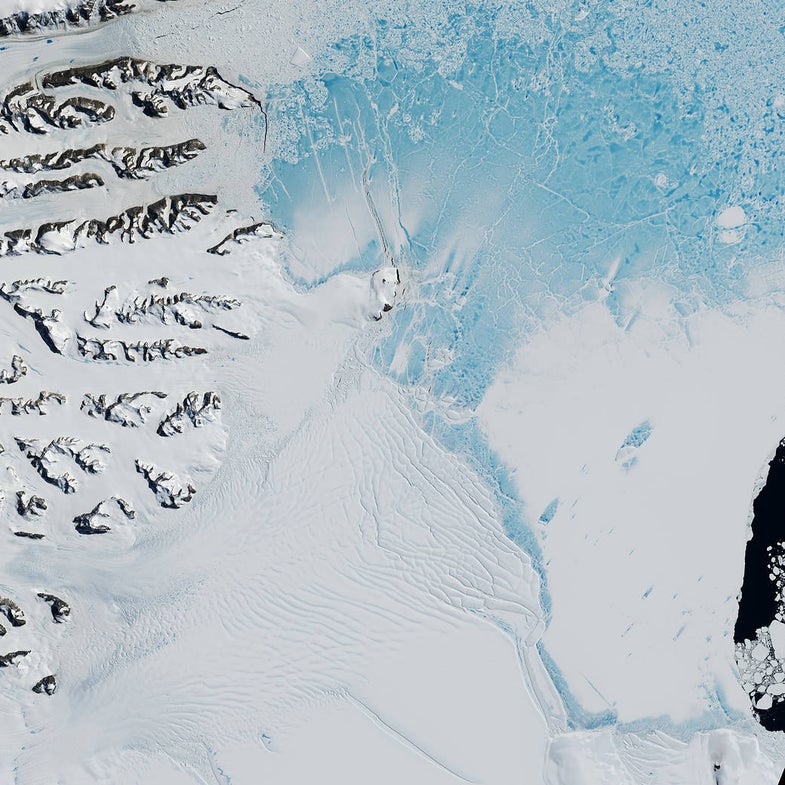That giant crack in Antarctica just keeps getting bigger
It's a matter of weeks before a Delaware-sized iceberg hits the high seas

A crack along an Antarctic glacier has grown roughly 30 miles in a matter of months, leaving NASA researchers to believe that the resulting iceberg—known as Larsen C—may make it to the open ocean in as little as a weeks or months. The six miles added to the rift since early January has brought it to a staggering 100 miles (give or take) in length.
The Delaware-sized iceberg first garnered broader attention in December, because it’s more typical for icebergs to slowly break up along the edges and collapse into smaller chunks. Larsen C (like Larsen A and B, which preceded it) has broken up in a far more breathtaking fashion—cleaving along dramatic fault lines which scientists link to climate change.

Glaciologists and climatologists are interested in the Antarctic ice sheet because it acts as a bellwether of climate change, and because of the importance that the Antarctic plays in regards to sea level rise. If the Antarctic ice sheet melted completely, it could raise worldwide sea level by 200 feet.
Though few expect a complete melt—the glaciers have weathered warmth before—a 2016 study in Nature found that continued growth of greenhouse gas emissions over the next several decades could trigger cause an unstoppable collapse of Antarctica’s ice. The result would be a sea level rise of more than three feet by 2100 and 45 feet by 2500. For the curious, the National Oceanic and Atmospheric Administration (NOAA) has an interactive sea level map that you can use to visualize the impact of sea level rise of up to six feet on your own community.
Larsen C’s collapse might speed up sea level rise. As long as the ice remains on land, sea level remains constant, but when the ice moves into the ocean it causes an increase—like putting ice cubes into an already full glass.
When the ice shelf Larsen B collapsed in 2002, the speed at which the on-land glaciers connected to it moved to the sea increased by as much as a factor of eight. The glaciers connected to Larsen C contain enough water to raise sea level by about half an inch.

Larsen C is not the only glacier causing concern in the Western Antarctic. In 2014 Iceberg B-31, roughly the size of Singapore, calved from Antarctica’s Pine Island Glacier. Pine Island is one of the primary glaciers to move ice from the West Antarctic interior to the ocean. On January 26th, NASA’s Operational Land Imager (OLI) on Landsat 8 captured a cleave nearly a mile long off the edge of the Pine Island Glacier.
“I think this event is the calving equivalent of an ‘aftershock’ following the much bigger event,” Ian Howat a glaciologist at Ohio State University told NASA. “Apparently, there are weaknesses in the ice shelf—just inland of the rift that caused the 2015 calving—that are resulting in these smaller breaks.”
The calving events are linked to the fact that the Western Antarctic is one of the fastest warming areas on Earth, which spells bad news for sea level rise, for the animals that live in the region, and for us.